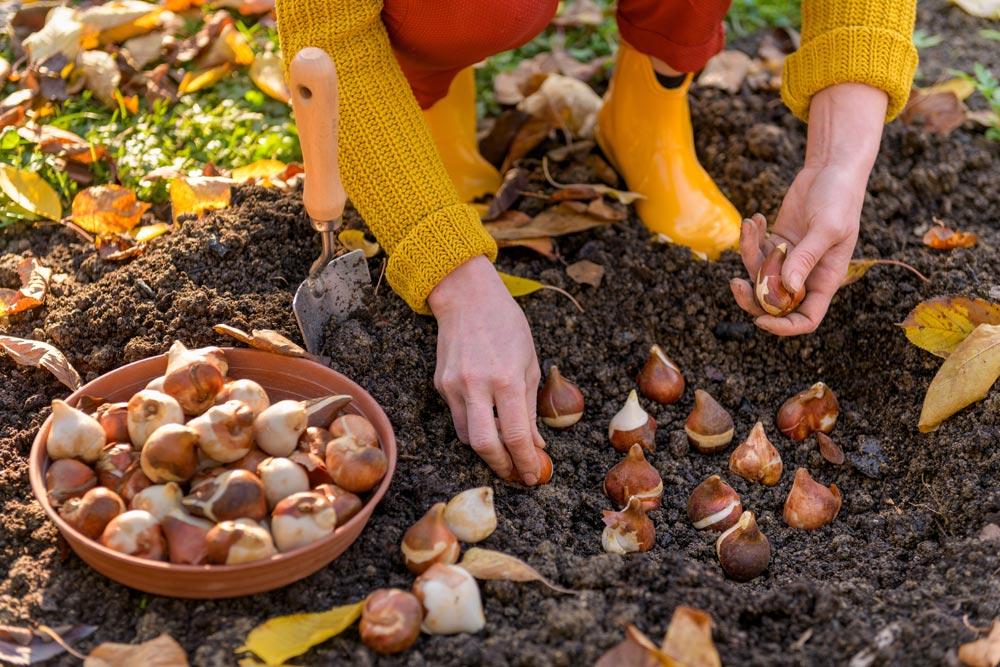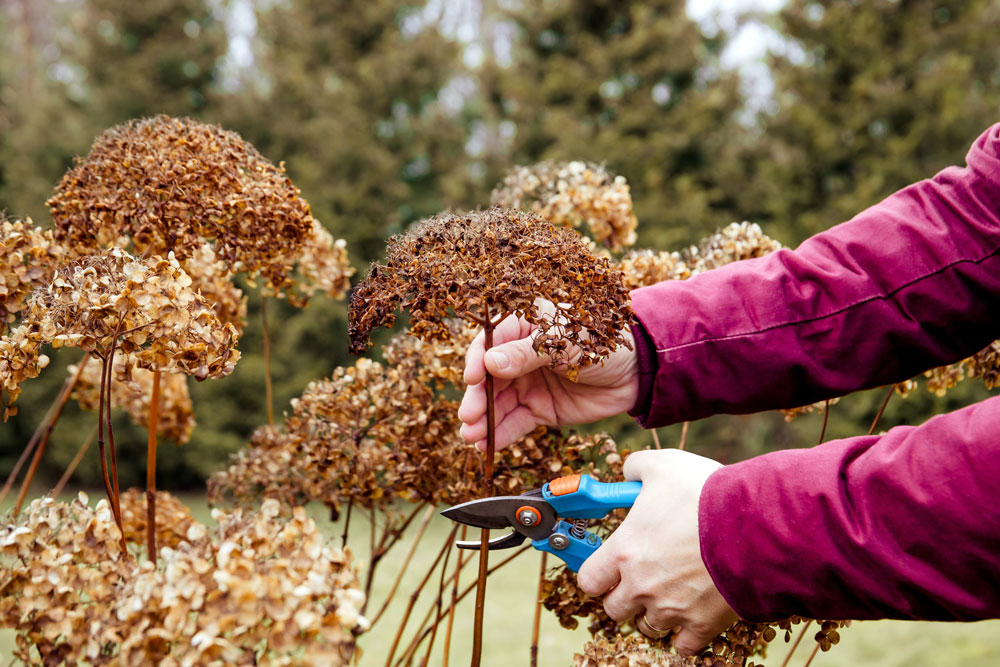As the leaves start to change and there’s a crisp chill in the air, it’s time to roll up your sleeves and get your garden ready for the cooler months ahead.
Preparing your garden for fall isn’t just about tidying up – it’s about setting the stage for a vibrant and healthy garden come spring.
Let’s dive into the essential tasks that will help your garden thrive through autumn and beyond.
1. Evaluate Your Garden

Take a stroll through your garden and reflect on the past growing season. What plants thrived, and which ones struggled? Jot down notes about successful plant combinations and areas that need improvement. This reflection will be invaluable when planning next year’s garden. Consider factors like sunlight, soil conditions, and watering needs to make informed decisions for the future.
2. Remove Annuals and Clean Up

It’s time to bid farewell to those colorful annuals that brightened up your summer. Gently pull out spent plants, making sure to remove the roots. Add healthy plant material to your compost bin – it’ll break down into nutrient-rich soil for next year. Be vigilant about diseased plants, though. Toss those in the trash to prevent spreading any issues to your compost or other plants.
3. Plant Fall Crops and Bulbs

Fall isn’t just about wrapping things up – it’s also a great time for new beginnings! Get a head start on spring by planting bulbs like tulips, daffodils, and crocuses. They’ll sleep through winter and surprise you with vibrant blooms when the weather warms. For the vegetable garden, consider cool-season crops like garlic, which needs a cold period to develop properly, or hardy greens like kale and spinach.
4. Cut Back Perennials

As perennials begin to die back, it’s time for some strategic pruning. Cut back plants that have finished blooming or are looking ragged. However, leave some stems and seedheads standing – they provide winter interest and food for birds. Be careful not to prune spring-flowering shrubs now, as you might accidentally remove next year’s buds. Instead, focus on cleaning up and shaping summer and fall bloomers.
5. Add Mulch and Compost

Give your soil some TLC by adding a fresh layer of mulch and compost. This dynamic duo helps insulate plant roots from temperature fluctuations, retains moisture, and suppresses pesky weeds. As an added bonus, organic mulches will slowly break down over time, enriching your soil with nutrients. Aim for a 2-3 inch layer, keeping it away from direct contact with plant stems to prevent rot.
6. Plant a Cover Crop
Consider sowing a cover crop in empty garden beds. Fast-growing options like winter rye or clover act as living mulch, protecting your soil from erosion and compaction. As a bonus, these crops add valuable nutrients and organic matter when tilled under in spring. This simple step can dramatically improve your soil health, setting the stage for a bountiful garden next year.
7. Manage Fallen Leaves

Don’t let those fallen leaves go to waste! They’re garden gold in disguise. Use a mulching mower to shred leaves directly onto your lawn – they’ll break down and feed the grass. Alternatively, gather leaves to create leaf mold (a fantastic soil amendment) or add them to your compost pile. A thin layer of whole leaves can also protect tender plants through winter.
8. Prepare for Winter
As temperatures drop, it’s crucial to protect your plants from frost damage. Insulate tender perennials with a thick layer of mulch around their base. For vulnerable shrubs, consider wrapping them in burlap to shield against winter winds and snow load. Don’t forget about your garden infrastructure – drain and store hoses, winterize irrigation systems, and empty rain barrels to prevent freezing and cracking.
9. Bring Houseplants Indoors

If you’ve been giving your houseplants a summer vacation outdoors, it’s time to bring them back inside before the first frost. Before you do, give each plant a thorough inspection for pests. A gentle spray with the hose can dislodge many unwanted visitors. Once inside, place plants in a bright spot and reduce watering and fertilizing to match their slower winter growth.
10. Tidy and Repair Garden Structures

Fall is the perfect time to show your garden tools and structures some love. Clean and sharpen your tools, then store them in a dry place to prevent rust. Inspect raised beds, trellises, and fences for any needed repairs. A little maintenance now will save you headaches in the spring when you’re eager to get planting. Don’t forget to clean out bird feeders and baths to keep your feathered friends healthy through winter.
Embracing the Seasonal Shift
As you work through these tasks, take a moment to appreciate the changing season. Fall gardening isn’t just about preparing for winter – it’s a time to slow down, observe, and connect with nature’s rhythms. The cooler weather makes outdoor work more enjoyable, and there’s a sense of satisfaction in tucking your garden in for its winter rest.
Remember, gardening is a journey, not a destination. Each season brings its own joys and challenges, and fall is no exception. By taking these steps to prepare your garden for the cooler months, you’re not just maintaining your outdoor space – you’re investing in its future vitality.
As you wrap up your fall garden prep, think ahead to those first warm days of spring. Imagine the excitement of seeing new growth emerge, nurtured by the care you’ve put in now. Your future self will thank you for the time and effort invested during these autumn days.













